Publisher Case Study: Increase your revenues with the Fullpage Interstitial
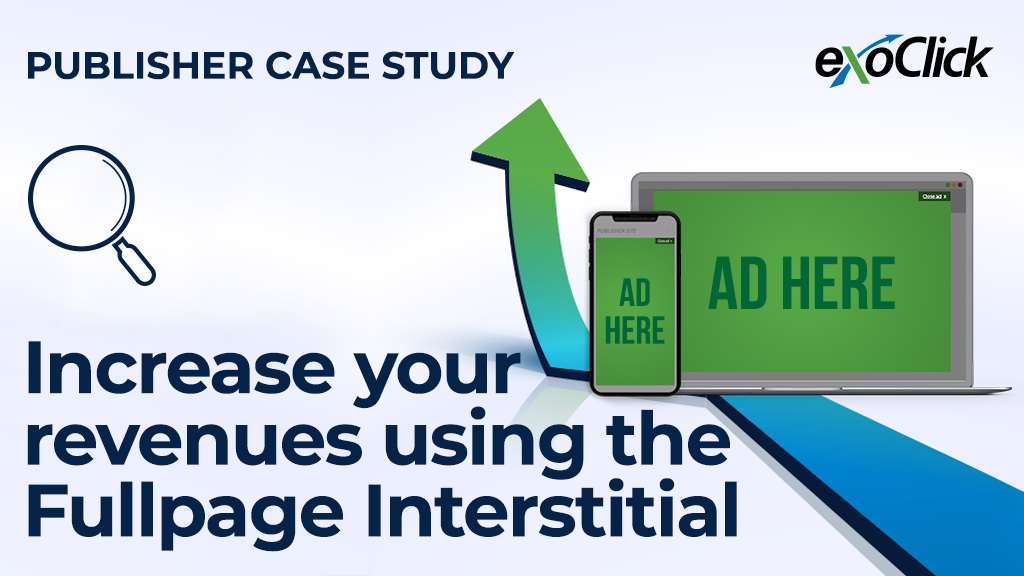
ExoClick’s Fullpage Interstitial (FPI) is a large format that takes up the full screen of the device the user is using to view your website. Available for desktop on the horizontal 1600x900px and mobile on the vertical 900x1600px. The format is responsive so works on tablet in vertical and horizontal formats. The Interstitials are served during user navigation of your website depending on how you program the triggers. The format is Google and Better Ads Coalition compliant because it features a ‘Close ad’ option at the top right of the ad. The advertiser can use a static image (jpeg or png) or a gif or MP4 to promote their offer within the FPI.
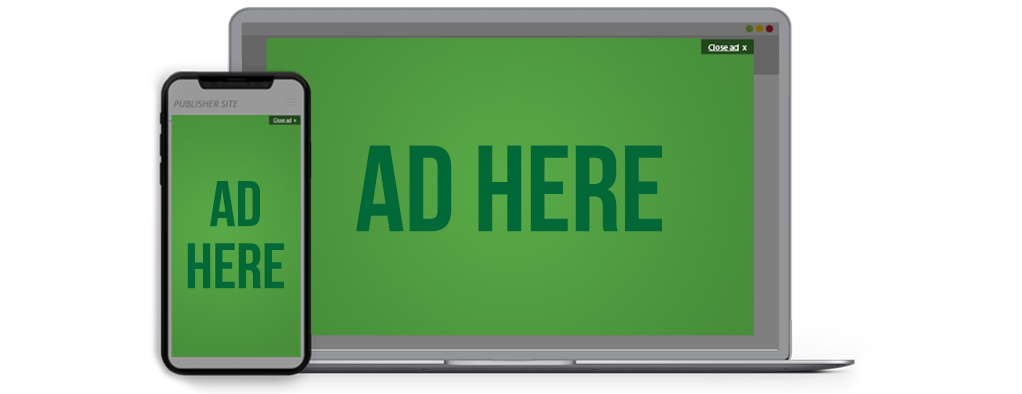
How are publishers implementing the FPI?
- This new format is getting implemented by big publishers, with the majority of the sites implementing the FPI on Chrome.
- While Chrome is the most common choice, some publishers are also using the FPI in combination with Popunders on later user clicks.
- Major publishers who implemented the FPI at the beginning of 2020 on Chrome have not been affected negatively since the Chrome update release in March/April, in fact the opposite has happened, and they have won more traffic as a result of not being penalized by Google.
Great user experience
- The format is fully compliant with the IAB and Google, not only with the Close button but also ExoClick limits the weight of creatives at 300Kb for jpg, png, gif and 1.5 Mb for video ads, for fast load times on your website ensuring a good Google ranking.
- The FPIs have great trigger options on how the format is shown to the end user along with frequency capping settings, so the ads allow for a non-intrusive user journey on your website.
- Some of the world’s biggest mainstream publishing sites use the format including Forbes.com.
What does it mean for your revenues?
- FPIs give you a second large sized ad zone to monetize, with the added flexibility to use FPIs as an alternative to/or in conjunction with Popunders, giving you an extra revenue stream.
- The format is available to bid on via CPM and CPC and demand for the format from advertisers is now higher than ever before. All ExoClick’s major advertisers are increasing their spending for the FPI on both mobile and desktop. This is driving up CPM prices, bringing big value to publishers.
Big CPM increases
Our Business Intelligence department analysed data for the Desktop FPI in 4 Tier 1 English speaking GEOs to see CPM evolution from September to the end of October:
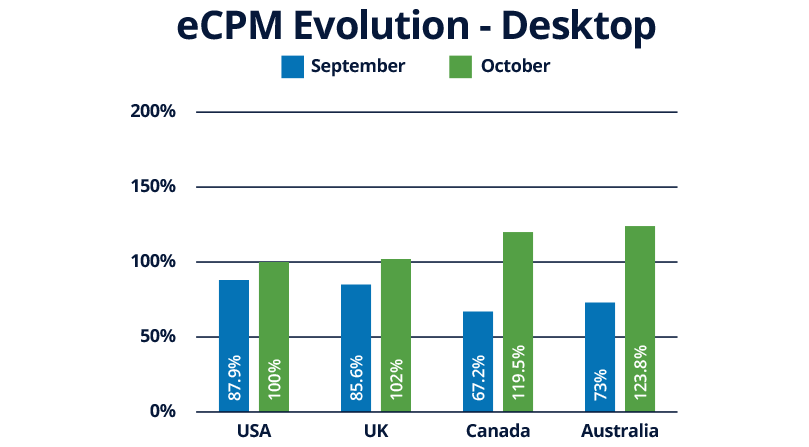
They also looked at the same GEOs for the Mobile FPI CPM evolution for the same period:
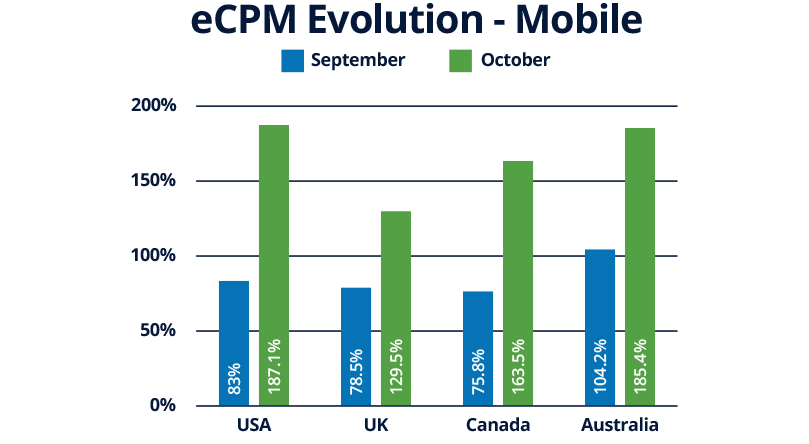
As you can see there is a big increase curve as demand from advertisers continues to push up the average CPM prices for Australia, Canada, UK, US and many others.
3 Publisher Case Studies
The following case studies show how two sites have increased their earnings after implementing the FPI and a third case study showing how after Popunders were blocked by Chrome, by switching to the FPI, the publisher has started to significantly recover lost revenues in 3 short weeks.
Publisher Case study #1 Desktop FPI: I implemented the Desktop FPI on 10 June, and looked at how revenues increased from 10-21 June and compared this to my website’s earnings before implementation from 1-10 June. I examined my top 5 GEOs, here are the results:
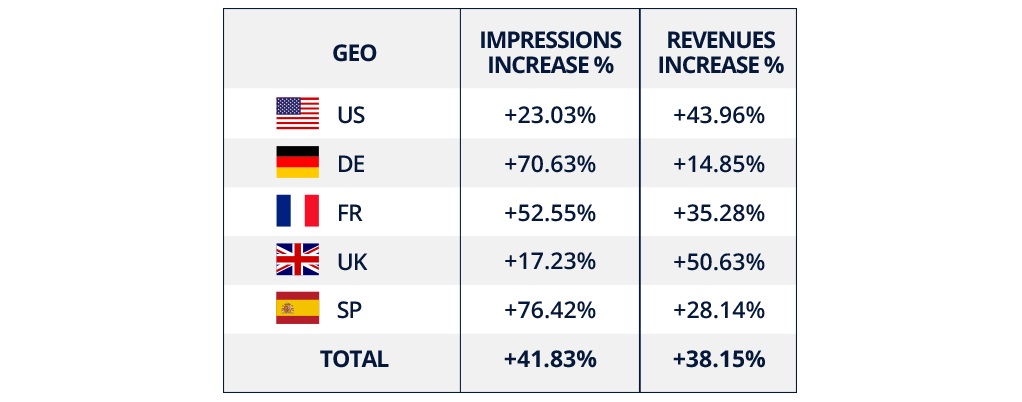
Impressions and revenues increased in all 5 GEOs, with the highest increase in my top 2 GEOs UK and USA.
Publisher Case study #2 Mobile FPI: I added the FPI to my mobile site in September on advice from my account manager. Most of my traffic comes from Asia and the US. I compared the October results for impressions and revenues to September and saw the following results:
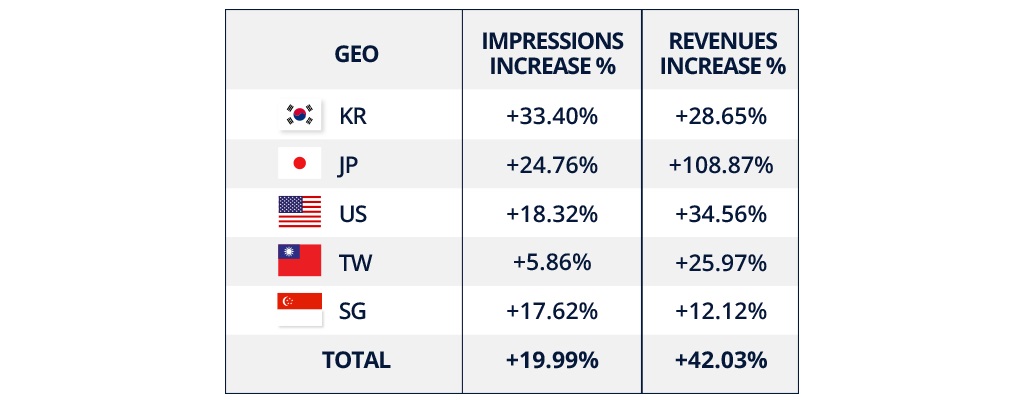
I was really happy with the revenue increase in Japan over 100%. Overall in my top 5 GEOs I saw a 42% increase in revenues. I will now implement this format on my desktop site.
Publisher Case study #3 A Popunder alternative: Chrome is blocking Popunders which are a large source of revenue across my top 5 GEOs, my account manager suggested that I replace Popunders with the FPI for both desktop and mobile. While I kept the Popunder on other browsers, I implemented the FPIs on Chrome on 1 October, in three weeks I was recovering a good percentage of my lost Popunder revenues, here are the results for my top 5 GEOs:
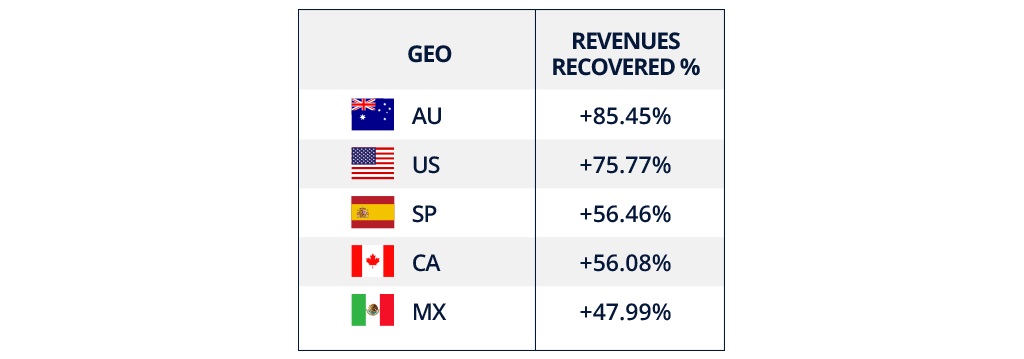
With other GEOs I am seeing a good upward trend and I’m glad I made the decision to switch.
FPI tips
Chrome blocking: If Google is blocking your Popunders, make the switch to the FPIs and start getting back your lost revenues.
FPI triggers: ExoClick allows you to set different ways to trigger your FPIs to end users to ensure you find the perfect sweet spot between revenues and user experience. Experiment with different triggering options. For example, in your admin panel you can set the trigger after the user has clicked a certain amount of times or by the amount of time he has been browsing your site.
Use a blend of Popunders and FPIs: If Chrome is not blocking your Popunders, to generate further revenues use a combination of both formats. There are three different trigger options to show both Popunders and FPIs to your end user during their journey on your website.